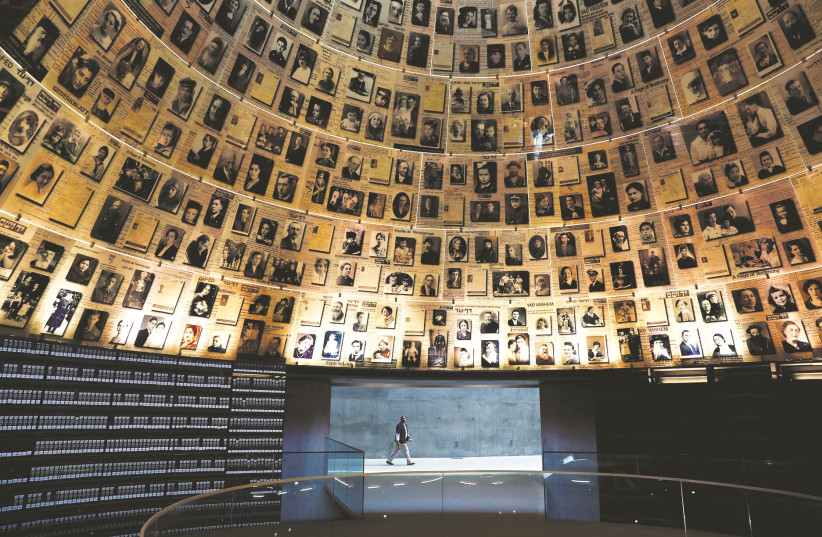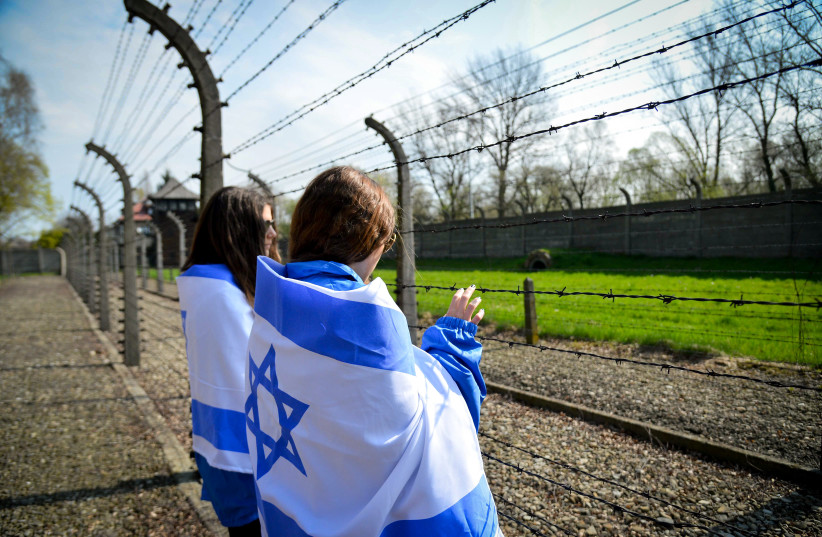‘Everyone write this down: ‘In 1933, the Nazis came to power,’” said my teacher.
This was how the first Holocaust lesson at my high school began. As a 16-year-old, I did not think anything of it. However, after 20 years, with the last 16 dedicated to being a Holocaust educator, I have developed strong opinions on how the Holocaust should be taught.
Reflecting on conversations with both Jewish and non-Jewish friends, I have come to realize that my experience was not unique. Starting the lessons of the Holocaust in 1933 still seems to be a prevalent approach. Recent articles, such as one by Dara Horn in the Atlantic, highlight the misrepresentation of the events that took place in many lessons on the Holocaust, despite the admirable efforts of some educators.
Focus on Jewish studies and the Holocaust
From 2017 to 2022, I had the privilege of teaching in Hong Kong. During this time, I was given an extraordinary amount of freedom in designing my curriculum. Although I was teaching in a non-Jewish setting, I chose to focus on Jewish studies and the Holocaust. This provided me with a remarkable opportunity to explore different teaching methods and refine my approach in order to effectively educate students about the atrocities of the Holocaust.

During my teaching experience, I realized the significance of providing context in lessons on the Holocaust. This contextualization takes three essential forms. First, it involves grounding the events in a Jewish perspective (as opposed to utilizing non-Jewish viewpoints), ensuring that the experiences and perspectives of the Jewish community are central to the narrative.
Secondly, it entails explaining that the Holocaust could not have occurred without the historical roots of 2000 years of Jew-hate, nor has the story of Jew-hate ended. By incorporating both aspects, students gain a more comprehensive understanding of the events that led to the Holocaust, as well as the experiences of Jews today. Thirdly, it involves explaining that the Jewish story is so much more than what is done to Jews. We are more than the crimes committed against us.
Jewish perspective of the Holocaust
When considering the Jewish perspective of the Holocaust, it is important to reflect on whose view we utilize. Often, we examine the events of the Holocaust through the lens of the Nazis and their allies. While survivor testimonies are often included, our understanding of the Jewish experience is filtered through the eyes of non-Jews. We rely on images and videos captured by them, and we analyze non-Jewish depictions of Jews and discuss the ideas and laws that targeted Jews, as well as non-Jewish actions perpetrated against Jews.
However, the six million Jews each have their own unique stories and experiences. It is crucial to remember that they were not passive victims, but individuals with agency and resilience. Instead of solely viewing the Holocaust through the eyes of non-Jewish Europeans, we should explore it through the experiences and testimonies of Jews. We should understand their perspectives and how they resisted both physically and spiritually.
A THOUGHT-PROVOKING exhibition in London last year called “Seeing Auschwitz” challenged the traditional perspective, by asking whose eyes we are looking through. It showcased alternative ways to represent the Jewish experience, including clandestine photographs taken by the Sonderkommando and illustrations as acts of recording testimony. These examples utilize the Jewish perspective on the crimes committed against us as well as demonstrating Jews fighting back and recording the crimes committed against them from their own perspective. Emanuel Ringelblum’s Oneg Shabbat group in the Warsaw Ghetto is another remarkable example of Jews documenting their experiences and resisting.
The Holocaust cannot be understood without considering its historical context of Jew-hate. The Nazis did not invent new ideas to target Jews; they drew upon historic prejudices and wrapped them in a 1930s German package. To grasp the true significance of the Holocaust, we must contextualize it and acknowledge its place within a long history of persecution.
This history includes the Spanish and Portuguese Inquisitions, the massacres of Jews during the Russian Civil War, the countless pogroms in Eastern Europe, and tragic events like the Kishinev Pogrom, as well as events in the Middle East and North Africa. By decontextualizing the Holocaust, we deny students the opportunity to understand the realities of Jew-hate and perpetuate the misconception that it was an isolated incident.
Holocaust's broader context
The Holocaust did not occur in isolation or without a historical backdrop. It is important to recognize that such a horrific event could not simply happen without understanding the broader context. When studying the Holocaust, much emphasis is placed on the Nazis’ manipulation and propaganda, but we must also consider the deep-rooted culture of violence, suspicion, and hatred toward Jews that existed for centuries. We must not overlook the fact that many non-Jewish Europeans grew up in societies where hostility toward Jews was ingrained. We must remember the first mass murder of Jews in Europe occurred in Mainz and Worms in 1096.

The story of the Holocaust did not begin in 1933, it began thousands of years ago and it is still being written today. It is vital that people learning about the Holocaust understand that. They must be exposed to the fact that Jews today are living in a time of alarming levels of Jew-hate, which are rooted in similar ideas to that of the Nazis, and other Jew-haters. With much talk of the lessons of the Holocaust, the number one lesson must be to fight Jew-hate specifically.
My classes on the Holocaust were bookended by lessons and activities on Jewish life. In the first lesson, we explored Jewish identity and indigeneity, so the students understood the people at the center of the story they were about to explore. This rooted the story in the Jewish perspective and enabled them to understand the realities of Jewish life.
On the final day of my class, I treated my students to an experience at an Israeli restaurant in Hong Kong. As we savored Middle Eastern dishes like shakshuka, humus, and falafel, I took the opportunity to emphasize the Jewish perspective once again. I wanted to ensure that my students understood that Jewish history extends far beyond the adversity we have endured. It is not confined to the tragic events of 1945.
Instead, it is a testament to our resilience and the continuous progress we have made. Gathered in Hong Kong, we were celebrating Jewish life, embracing its richness, rather than solely focusing on the dark chapters of Jewish persecution and devastation. This moment of realization profoundly impacted my students, enabling them to grasp the broader narrative that encompasses the Jewish people.
So, what does this mean for Holocaust education?
It means that we must prioritize and center the Jewish perspective. We must not diminish the Jewish experience in the Holocaust, nor our historic experience. We must focus on the lives of the Jews who were murdered. Their stories and experiences should be at the forefront of our teaching. By doing so, we honor their memory and ensure that their voices are heard.
Students must also understand that Jew-hate has plagued the world for thousands of years and that it is a continuous threat to the lives of Jews and therefore all lessons on the Holocaust must include time spent learning about the wider context of Jew-hate.
Lastly, students must be taught that Jews are so much more than the hate we face. They must understand the fullness of our experience and history and the richness and beauty of our civilization.
This is how we teach the Holocaust.
The writer is the founder of the modern Jewish Pride movement, an educator and the author of Jewish Pride: Rebuilding a People and Reclaiming our Story: The Pursuit of Jewish Pride.
